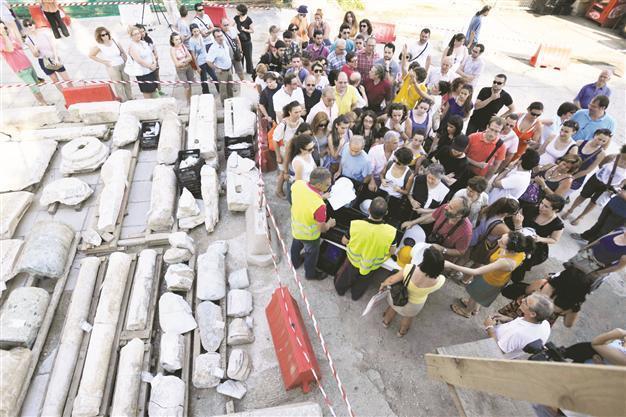Subway work reveals ancient road in Greece
THESSALONIKI - The Associated Press

Archaeologists and employees of Metro’s construction company present to the media and public the ancient ruins in the Greek port city of Thessaloniki. AP photo
Archaeologists in Greece’s second-largest city have uncovered a 70-meter section of an ancient road built by the Romans that was the city’s main travel artery nearly 2,000 years ago. The marble-paved road was unearthed during excavations for Thessaloniki’s new subway system, which is due to be completed in four years. The road in the northern port city will be raised to be put on permanent display when the metro opens in 2016.The excavation site was shown to the public on June 25, when details of the permanent display project were also announced. Several of the large marble paving stones were etched with children’s board games, while others were marked by horse-drawn cart wheels. Also discovered at the site were remains of tools and lamps, as well as the bases of marble columns.
Viki Tzanakouli, an archaeologist working on the project said that the Roman road was about 1,800 years old, while remains of an older road built by the ancient Greeks 500 years earlier were found underneath it.
“We have found roads on top of each other, revealing the city’s history over the centuries,” Tzanakouli said. “The ancient road, and side roads perpendicular to it appear to closely follow modern roads in the city today.”
About seven meters below ground in the center of the city, the ancient road follows in roughly the same direction as the city’s modern Egnatia Avenue.
The subway works, started in 2006, present a rare opportunity for archaeologists to explore under the densely populated city - but have also caused years of delays for the project.
















